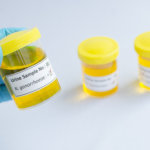
Trichinosis is a less-common type of infection that’s seen in as little as 10, 000 documented cases in the world every year. It’s a parasitic infection that’s most commonly contracted when working with meat infected with the parasite that hasn’t been cooked to the optimal heat that kills the bacteria.
The risk of contracting trichinosis is why it’s generally recommended to make sure that meat is cooked at high temperatures – and cooked completely through – especially when we’re talking about cooking pork and beef. It’s also important to stick to effective hygiene methods at all times, especially when working with raw pork and to avoid any meat that’s been obviously affected with trichinosis, which can sometimes be seen by the presence of cysts within the meat.
Eating infected meat is the most common way to contract trichinosis, and once you’ve picked it up, you can manifest with a range of different symptoms.
Here are 8 of the most common trichinosis infection symptoms.
1. Severe discomfort, cramping, and pain in the abdomen.
Severe discomfort, cramping, and pain felt in the abdomen is most often the first symptom with which a trichinosis infection will present. Since the most common way of contracting the parasite is the ingestion of meat that’s been infected with the parasite or its eggs, it will most commonly manifest with a range of different symptoms that mimics that of a standard bout of food poisoning.
Several of the symptoms on this list that can be combined and that lasts for longer than the average bout of stomach flu (which is generally no longer than 48 hours), means that you should make an appointment with your doctor and discuss the possibility of a trichinosis infection as the cause behind your symptoms.
In the meantime, the discomfort and abdominal pain can most often be treated symptomatically with over-the-counter medications or natural means like using ginger to ease the discomfort and pain.



